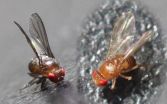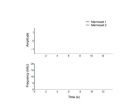Prehistoric carnivore dubbed 'scarface' discovered in Zambia
2015-08-13
(Press-News.org) Scientists at The Field Museum have identified a new species of pre-mammal in what is now Zambia. Thanks to a unique groove on the animal's upper jaw, it was dubbed Ichibengops (Itchy-BEN-gops), which combines the local Bemba word for scar (ichibenga), and the common Greek suffix for face (ops). Put simply: Scarface.
Believed to be roughly the size of a dachshund, Ichibengops lived around 255 million years ago, and was a member of Therocephalia, a group of ancient mammal relatives that survived the largest mass extinction in history (the Permian-Triassic extinction). The species description was published in the Journal of Vertebrate Paleontology by University of Utah, University of Washington and Burke Museum, and The Field Museum.
"Discoveries of new species of animals like Ichibengops are particularly exciting because they help us to better understand the group of animals that gave rise to mammals," said Field Museum's Kenneth Angielczyk, PhD, associate curator of paleomammalogy. "One interesting feature about this species in particular is the presence of grooves above its teeth, which may have been used to transmit venom."
Indeed, venomousness is rare among mammals and their extinct relatives. Only a handful of modern mammals produce venom, including the platypus and certain species of shrews. One other extinct therocephalian, Euchambersia, has been suggested to be venomous, but even among ancient mammal relatives this is an exception rather than the rule. Although the trait is uncommon, it may have proved advantageous to carnivores by enabling them to better capture prey and defend themselves.
Angielczyk, whose work focuses on ancient mammal relatives, explained the importance of finding new species like Ichibengops. "By studying the effects of the Permian-Triassic mass extinction and the subsequent recovery, we can apply the lessons we learn to the mass extinction being caused by humans today."
INFORMATION:
ELSE PRESS RELEASES FROM THIS DATE:
2015-08-13
Scientists have been fascinated by a series of unusual exploding stars -- outcasts beyond the typical cozy confines of their galaxies. A new analysis of 13 supernovae -- including archived data from NASA's Hubble Space Telescope -- is helping astronomers explain how some young stars exploded sooner than expected, hurling them to a lonely place far from their host galaxies.
It's a complicated mystery of double-star systems, merging galaxies, and twin black holes that began in 2000 when the first such supernova was discovered, according to study leader Ryan Foley, University ...
2015-08-13
New research from North Carolina State University and Reed College shows that when fruit flies are attacked by parasites or bacteria they respond by producing offspring with greater genetic variability. This extra genetic variability may give the offspring an increased chance of survival when faced with the same pathogens. These findings demonstrate that parents may purposefully alter the genotypes of their offspring.
Fruit flies' reproductive cells are usually haploid, meaning that there is only one copy of each chromosome in the cell's nucleus instead of two. During ...
2015-08-13
This news release is available in Japanese.
As nonhuman primates mature, their vocalizations are thought to be minimally or not at all influenced by caregivers - but a new study reveals that infant marmosets use cues from adults as they develop vocalizations. In a surprise twist then, humans may not be the only primates whose vocal development benefits from early communication. To monitor and measure the vocal development in marmosets, Daniel Takahashi et al. recorded vocalizations between the first day of birth and two months of age, using four well-established ...
2015-08-13
This news release is available in Japanese.
Amid climate change debates revolving around limited increases in recent global mean surface temperature (GMST) rates, Kevin Trenberth argues that natural climate fluxes - larger than commonly appreciated - can overwhelm background warming, making plateaued rates, or hiatuses, deceiving in significance. After many years of monitoring, it's clear that the GMST can vary from year to year, even decade to decade; these differences, Trenberth argues, are largely a result of internal natural variability. For example, the Pacific ...
2015-08-13
This news release is available in Japanese.
The recently commissioned Gemini Planet Imager has made its first exoplanet discovery: what may be the lowest-mass exoplanet ever directly imaged with a space telescope instrument. Based on available data, the researchers project the planet weighs twice as much as Jupiter - far less than exoplanets directly imaged before, which weighed at least five times Jupiter's mass. The findings from the next-generation Gemini imaging tool pave the way toward a better understanding of how our solar system was formed. In ...
2015-08-13
The Gemini Planet Imager has discovered and photographed its first planet, a methane-enshrouded gas giant much like Jupiter that may hold the key to understanding how large planets form in the swirling accretion disks around stars.
The GPI instrument, which is mounted on the 8-meter Gemini South telescope in Chile, is the size of a small car and was designed, built and optimized for imaging and analyzing the atmospheres of faint Jupiter-like planets next to bright stars, thanks to a device that masks the star's glare.
In December 2104, GPI began searching hundreds of ...
2015-08-13
A Jupiter-like planet within a young system that could serve as a decoder ring for understanding how planets formed around our Sun has been discovered by a team of astronomers from the University of Montreal's Institute of Research on Exoplanets (iREx) in collaboration with an international team of astronomers led by professor Bruce MacInstosh from Stanford University. One of the best ways to learn how our solar system evolved is in fact to look to younger star systems in the early stages of development.
The new planet, called 51 Eridani b, is the first exoplanet discovered ...
2015-08-13
While it may not shock you to learn that children born with disorders of sex development (DSD) face challenges, Concordia University researchers have confirmed that these go far beyond the physical.
In a paper published in the journal Hormone and Metabolic Research, psychology professor William M. Bukowski and his co-authors Elizabeth McCauley and Thomas Mazur examine the potential effects that these disorders can have on children's and adolescents' peer relationships.
The term "disorders of sex development" covers a range of conditions, from physical malformations ...
2015-08-13
Fifteen years ago, an odd mutant fruit fly caught the attention and curiosity of Dr. Ravi Allada, a circadian rhythms expert at Northwestern University, leading the neuroscientist to recently discover how an animal's biological clock wakes it up in the morning and puts it to sleep at night.
The clock's mechanism, it turns out, is much like a light switch. In a study of brain circadian neurons that govern the daily sleep-wake cycle's timing, Allada and his research team found that high sodium channel activity in these neurons during the day turn the cells on and ultimately ...
2015-08-13
For any complex society to function properly, individuals--be they people or social insects--must reliably recognize their friends and family with whom they live and work and readily distinguish those allies from strangers. Ants and other social insects manage this feat of recognition based on chemical pheromones, which are detected via sensors in their antennae. Now researchers reporting August 13 in Cell Reports have discovered that when it comes to assessing body odors, ants really don't miss a thing.
"To our surprise, these very low volatility compounds are not only ...
LAST 30 PRESS RELEASES:
[Press-News.org] Prehistoric carnivore dubbed 'scarface' discovered in Zambia






